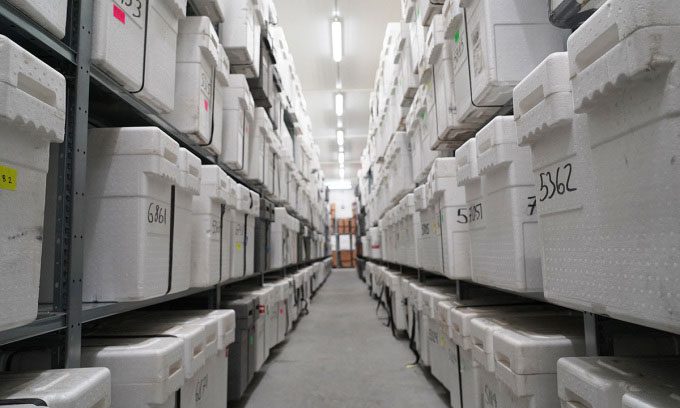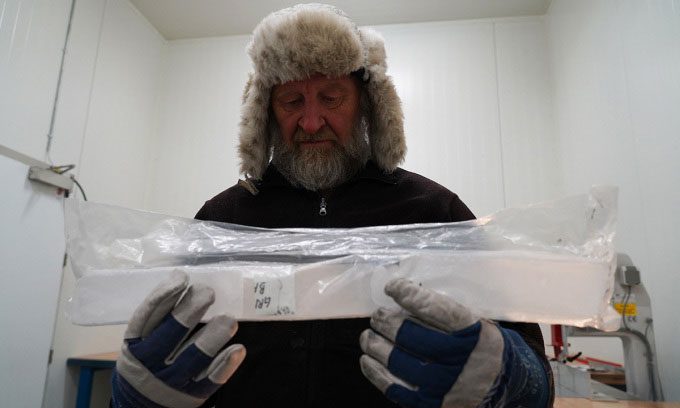The Ice Core Repository at the University of Copenhagen houses a vast collection of ice cores dating back thousands of years, providing valuable information about the climate.

Insulated boxes containing ice core samples stacked on shelves in the repository in Copenhagen, Denmark, on October 26, 2023. (Photo: James Brooks/AFP)
The Ice Core Repository in Copenhagen, Denmark, contains 25 kilometers of ice, primarily collected from Greenland, and is aiding scientists in understanding climate changes, AFP reported on November 16. “What we have in this repository is a record of prehistoric climate change, a record of human activities over the past 10,000 years,” said Jorgen Peder Steffensen, a glaciology professor at the University of Copenhagen.
Steffensen has managed this “ice library” since 1991. It is one of the largest ice repositories in the world, with 40,000 ice blocks stored in large boxes on long shelves. These frozen samples are unique, formed from compressed snow rather than frozen water. “Every air pocket between the snowflakes is preserved as bubbles, and the air inside these bubbles is as old as the ice itself,” Steffensen explained.
The repository features a waiting room similar to a library reading room. This is where scientists can examine the ice they retrieve from the main storage area. However, they must act quickly, as the temperature in the waiting room is maintained at -18 degrees Celsius, warmer than the -30 degrees Celsius in the storage room.

Joergen Peder Steffensen holding an ice core sample in the repository in Copenhagen, Denmark. (Photo: James Brooks/AFP)
The first ice cores were brought to Denmark in the 1960s by a research team from Camp Century, a secret U.S. military base in Greenland. The most recent cores were collected this summer when scientists drilled down to the bedrock at a depth of 2.6 kilometers east of Greenland, retrieving the oldest ice cores possible.
These samples contain material from 120,000 years ago, during the most recent interglacial period, when air temperatures in Greenland were 5 degrees Celsius higher than today. The newly collected ice will help scientists better understand sea level rise.
Ice cores are the only way to determine the state of the atmosphere before pollution from human activities emerged. “With ice cores, we have charted the changes in greenhouse gases, CO2, and methane over time. We can also see the impact of modern fossil fuel combustion,” Steffensen stated.


















































